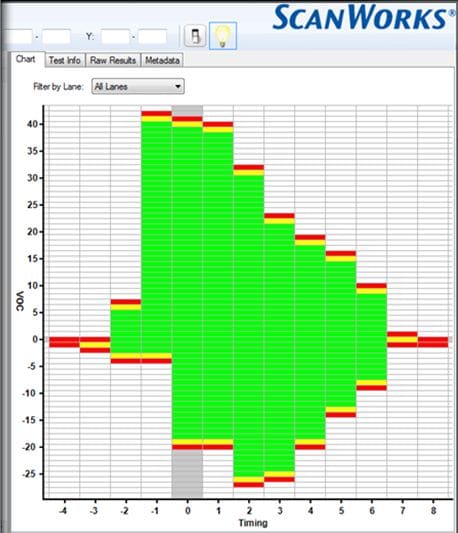Serial ATA 3 (SATA 3, or SATA III) is a differential bus
running at 6Gbps. It’s commonly used on computer motherboards, such as
notebooks, to connect to mass storage devices. How do you know if your hard
disk or flash drive is running at full speed?
As can be read in my previous blogs on Testing
Intel QuickPath Interconnect and Testing
PCI Express, differential buses pose unique assembly test challenges.
Because they run in common mode, some structural defects (such as shorts and
opens) will be invisible to functional test. And some at-speed tests are
invisible to traditional structural test technologies, such as ICT or boundary
scan. It really takes a combination of test technologies to capture the
universe of potential structural, functional and performance-impacting
failures.
As an illustration of this, we recently ran a ScanWorks for
Intel HSIO margining test on SATA 3 from two motherboards from two different
vendors. The good one looked like this:
The “bad” motherboard exhibited the following “arrowhead”
eye diagram behavior:
So what, you say? It’s a classic “if a tree falls and no one
is around to hear it, does it make a sound?” question. Many computer users won’t
notice the difference – their computer will just run a little slower than its
potential, but they really have nothing to benchmark it against. In this case,
the ODM was lucky enough to catch the failure before they built a huge number
of boards, and inflicted them upon unknowing users.
Oh, and while we’re on the subject of signal integrity, I
happened to read this interesting blog from Thierauf Design & Consulting on
the pitfalls of taking shortcuts on SI: http://www.thieraufdesign.com/signal-integrity-blog/15-walking-through-your-layout-database.
Happy reading!




